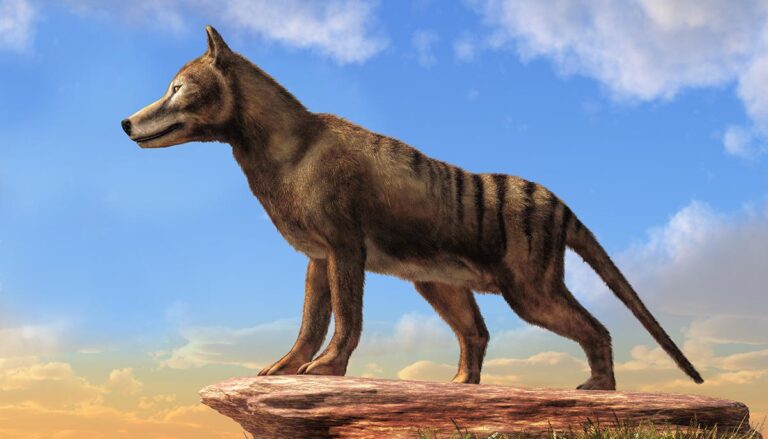Hollywood A-listers the Hemsworth brothers are among other investors in a multimillion-dollar effort led by a Texas company to bring the Tasmanian tiger back from extinction. The marsupial died out nearly a century ago, but now it might stage a comeback.
What is a Tasmanian Tiger and when did it go extinct?
The Thylacine, (thylacinus cynocephalus), commonly known as the Tasmanian tiger or Tasmanian wolf, was a carnivorous marsupial native to the Australian mainland, as well as the islands of Tasmania in New Guinea. The last known live animal was captured in 1930 in Tasmania.
Although most often called a Tasmanian tiger, appearance-wise, this creature resembled dogs and foxes more than members of the cat family. To make an already unusual animal even stranger, the Tasmanian tiger was marsupial with a pouch like a kangaroo. Its similarity to tigers are stripes on its back and behind. Overall, the thylacine was relatively shy and nocturnal.
The event that killed the last thylacine
On May 13, 1930, Hunter Wilfred Batty couldn’t have known that when he shot a thylacine, he had killed the last one in the wild, CNET reported.
Six years later, a thylacine specimen in captivity at the Hobart Zoo named Benjamin died. As far as anyone knows, he was last in line, and the species went extinct with him.
The effort to bring the Tasmanian Tiger back from extinction
The initiative began when the TIGRR (Thylacine Integrated Genetic Restoration Research) lab was established with a multimillion-dollar ($5 million Australian/$3.5 million US) donation from the Wilson Family Trust in March.
Andrew Pask, a professor of evolutionary biology at the University of Melbourne, announced that he and his team would be using the $5M AUD gift with a goal to “de-extinct” the thylacine in the next decade, the Guardian reported.
Then Colossal Biosciences, a “de-extinction” company that has previously announced plans to use DNA to revive the woolly mammoth, got involved.
On August 16, Colossal announced it was joining Pask’s research effort, aiding with further developing the necessary technologies to resurrect the thylacine, and would be contributing $10 million in funding over the next three years.
Colossal was co-founded by Ben Lamm and George Church. The latter is a Harvard and MIT professor called the “father of synthetic biology.” Church is considered one of the world’s most experienced experts at working with CRISPR, a technology that allows scientists to edit DNA with almost-unmatched precision.
Big-time funding behind effort includes A-list Hollywood celebrities
Hollywood A-listers and others have gotten involved in the effort to restore the Tasmanian tiger. Thor actor Chris Hemsworth and his brothers Luke and Liam, the Daily Mail reported, made investments in Colossal Biosciences.





